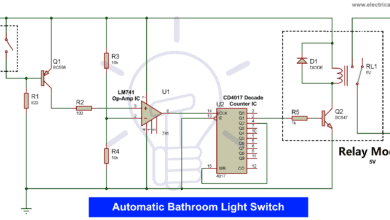Ukraine to Unleash an Army of Robotic Dogs on the Battlefield
Ukraine to Deploy a Swarm of Robotic Dogs for the 1st Time on its Front Lines
Ukraine is preparing for a technological breakthrough on the battlefield. For the first time, the country plans to deploy an army of robotic dogs on its front lines to aid its fight against Russia. These robots are not just futuristic ideas but reality, ready to enhance Ukraine’s military capabilities. The move marks a new era in modern warfare, blending robotics and strategy.
A New Kind of Weapon
Ukraine’s decision to utilize robotic dogs signals a shift toward advanced technologies in combat. These robots, designed for various tasks, bring significant advantages. They can detect mines, perform reconnaissance, and transport supplies. Unlike human soldiers, they don’t tire, and they can access dangerous areas without risk to human life.
This army of robotic dogs will act as critical support for ground forces. Instead of sending soldiers into life-threatening situations, Ukraine can deploy the robots, saving both time and lives.
Not Just a Sci-Fi Dream – The Horror Dream Comes True
The concept of robot dogs on the battlefield might sound like something out of a sci-fi movie, but the horror story is real and it’s happening now. Similar robots, created by companies like Boston Dynamics like BigDog for U.S. Army, have been tested in various environments. Equipped with sensors, cameras, and AI, they’re capable of performing complex tasks.
While Boston Dynamics is no longer involved in defense projects, the U.S. Army has yet to deploy armed robotic dogs. In contrast, China has already equipped the People’s Liberation Army (PLA) with robotic dogs, while Russia is experimenting with the M-81 quadruped robot, showcased at the ARMY-2022 show.
Their versatility is a key factor in Ukraine’s decision to use them. Whether they’re helping soldiers navigate tricky terrain or identifying potential threats, robotic dogs bring a new level of efficiency to military operations.
Robotic Dogs in Action in the Ukraine – Russia War
The robots are seen in video footage from the Donetsk region, covered by camouflage blankets provided by Concamo, a German supplier. While stationary, the robotic dogs blend seamlessly into the environment, and when in motion, the camouflage makes them invisible to both visual and thermal imaging.
The robot dogs are not just an autonomous, but they can be controlled remotely. These robotic dogs, with a battery life of 5 hours, can reach speeds of 9 miles per hour and be controlled from up to two miles away.
According to a report by the German tabloid Bild, the British security company “Brit Alliance” has provided 30 robotic dogs to the Ukrainian army. These robots are not manufactured by Brit Alliance but have been identified as Chinese-made Unitree Go2 Pros. These robots are equivalent in efficiency, low cost, and high specifications to Chinese-made DJI quadcopters.
The Unitree Go2 Pro, weighing under 30 pounds, can reach a maximum speed of 11 miles per hour and carry payloads of up to 9 pounds, including sensors, demolition charges, or supplies. Each unit costs up to $4,500 with shipping from China. They can operate autonomously for scouting and navigating uneven surfaces and rough terrain with stability.
In a post shared on the official social media account of the Ministry of Defense, Kurt, a commander in Ukraine’s 28th Mechanized Brigade, stated, “Every unit should have one of these robotic dogs.”

Key Roles of Robotic Dogs
One of the primary roles these robots will play is scouting and mine detection. Ukraine, a country deeply affected by landmines, sees this as a game-changer. The robots can scan vast areas and pinpoint hidden explosives, reducing the risk to soldiers. By identifying and disarming mines, they pave the way for safer movement of troops.
Another crucial function of the robotic dogs is intelligence gathering. Their ability to quietly survey enemy positions offers Ukraine a tactical advantage. Equipped with high-definition cameras and night vision, they can relay real-time information to command centers, allowing for quicker decision-making on the battlefield.
The robots are also expected to carry supplies across difficult terrains, providing essential gear and equipment to troops in hard-to-reach areas. This reduces the logistical burden on human forces, allowing soldiers to focus on critical tasks.
A Global First in Modern Warfare
Although robotic technology has been used in other military contexts, Ukraine’s deployment of robotic dogs is a first. No other country has relied on such technology in such a comprehensive way. The decision is seen as an important milestone in modern warfare.
Ukraine’s adoption of robotic dogs reflects the country’s focus on innovation, driven by the urgency of the conflict with Russia. Faced with a prolonged war, the need for creative solutions has grown. These robots are not just tools, they represent a shift in military thinking.
Challenges and Criticisms
While the potential of robotic dogs is impressive, challenges remain. The technology is still relatively new, and its effectiveness in active combat has yet to be proven. Some experts are cautious, warning that technical issues could arise in high-pressure environments.
Moreover, there are concerns about the cost. Robotic dogs are expensive where one unit costs $4,400-$8,800 (4,000-8,000 €), and maintaining them could stretch Ukraine’s military budget. With other critical needs, some argue that the investment might not yield immediate returns. Still, Ukraine remains optimistic, seeing the robots as a vital part of its strategy.
The Future of Robotic Warfare
Ukraine’s decision to deploy robotic dogs could signal the start of a new trend in warfare. As technology continues to evolve, more countries may turn to robots and AI to support their military efforts. The potential to reduce human casualties and increase efficiency is driving this shift.
In the future, we could see an even greater reliance on autonomous machines in combat zones. From drones to robotic dogs, the possibilities are endless. Ukraine’s current plans could be just the beginning of a much larger movement toward robotic warfare.
A Bold Step Forward
Ukraine’s army of robotic dogs is set to make history. As the first country to deploy such technology on a large scale, it is pushing the boundaries of modern warfare. With the ability to detect mines, gather intelligence, and support troops, these robots are likely to play a pivotal role in Ukraine’s ongoing conflict with Russia.
While challenges remain, the introduction of robotic dogs marks a bold step forward for Ukraine. The country’s willingness to innovate in the face of adversity could reshape the future of military strategy, not just for itself, but for nations worldwide. The world will be watching closely as these robotic companions take their place on the battlefield.
Related News Updates:
- US Firms Plan Nuclear Battery Nickel-63 with 50-Year Lifespan to Counter China
- Betavolt Developed a Nuclear Battery with a 50-Year Lifespan
- Scientists Finally Discovered a New “Magical” Magnet
- Qurmit – 95% Recyclable Fireproof Battery with 20 Years of Lifespan
- The ONE Gemini Battery Powers EVs 752 Miles on a Single Charge
- Japan Introduces Magnetic Levitation Car Technology – The End of Engines and Batteries







